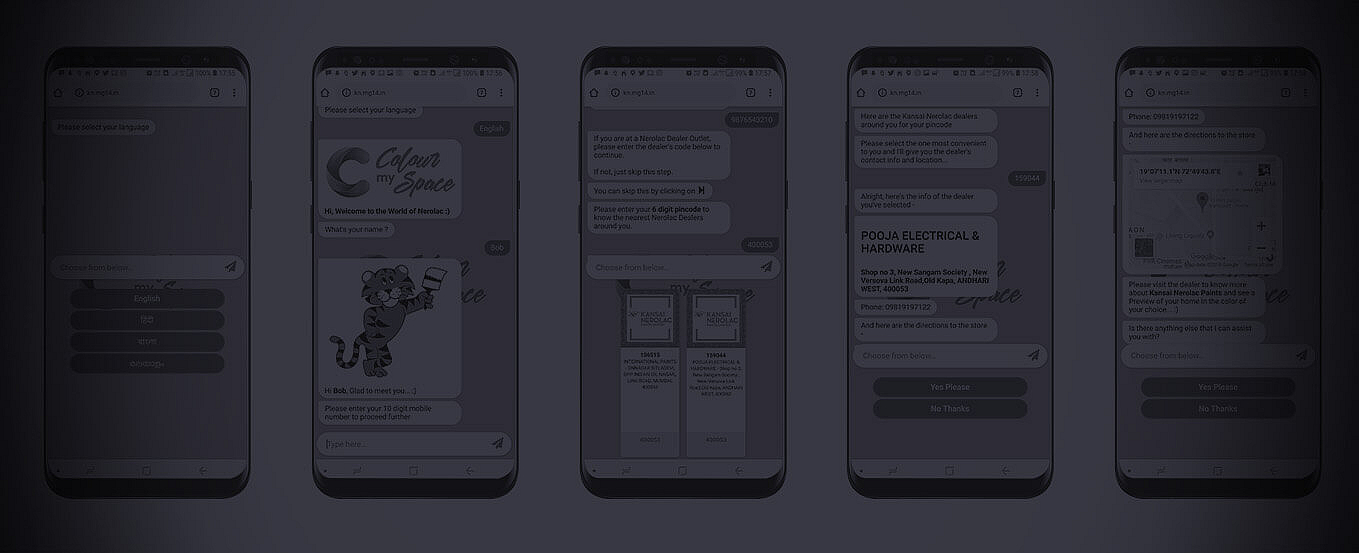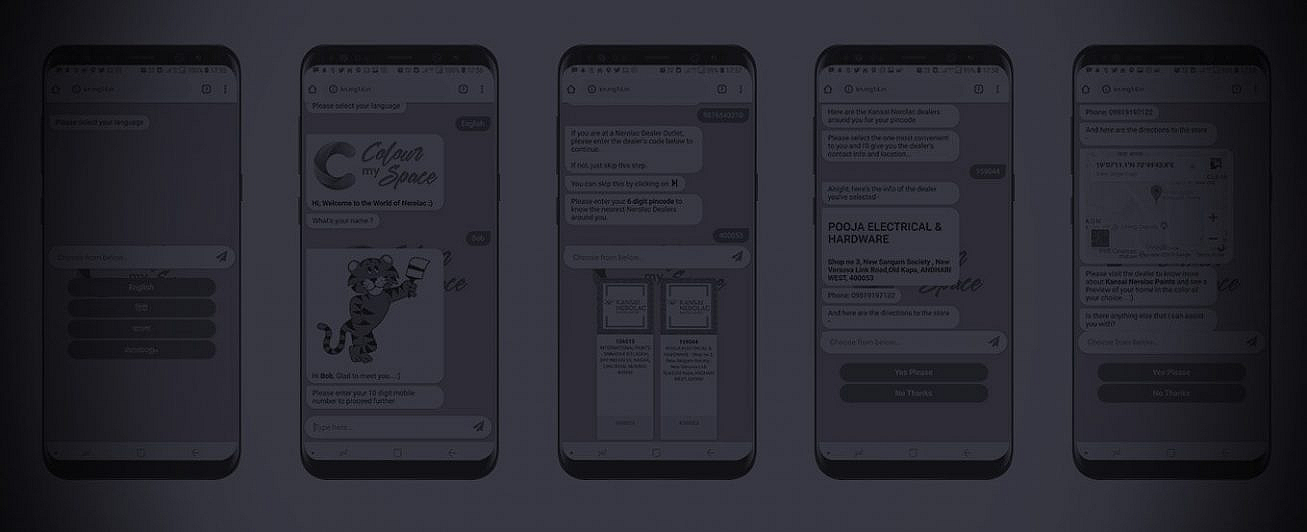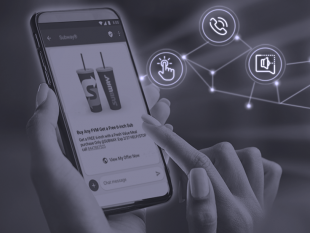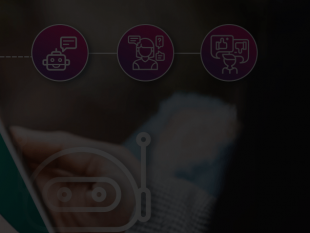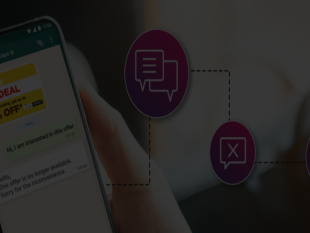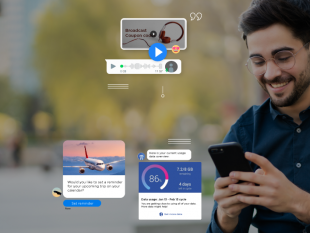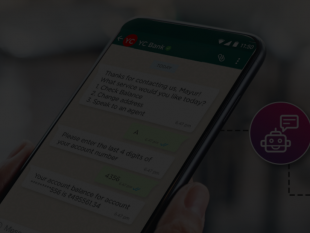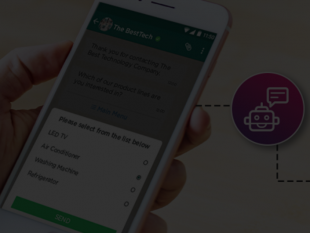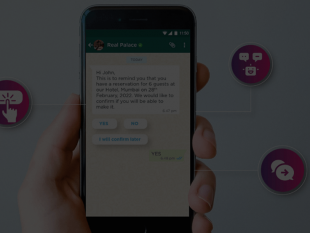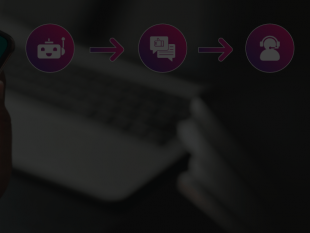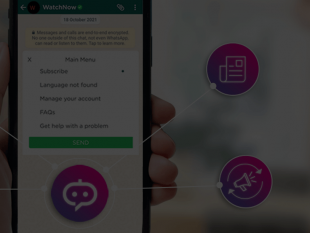
The best way to know your customers, is to have a conversation with them. So if you have decided to implement a chatbot on your website or app, you are on the right track. This is a big step towards interacting with your customers, engaging them and understanding them better. You’re about to be in the league with world-class companies who have tapped the power of chatbots. Chances are, you’re already using one chatbot yourself- Siri, Alexa, Google Now are all chatbots implemented cleverly.
Interesting fact: 89% of consumers want to engage in conversation with virtual assistants to quickly find information instead of searching through web pages or a mobile app on their own.
Drumroll: Chatbots are in!
The key benefit of a Chatbot is the ability for your customer to interact with you and yet not feel the need to talk to a Human! Therefore, Chatbot conversations should be intelligent enough on how you handle a customer’s requirement. You should also remember that Chatbot conversation could start in two fashions.
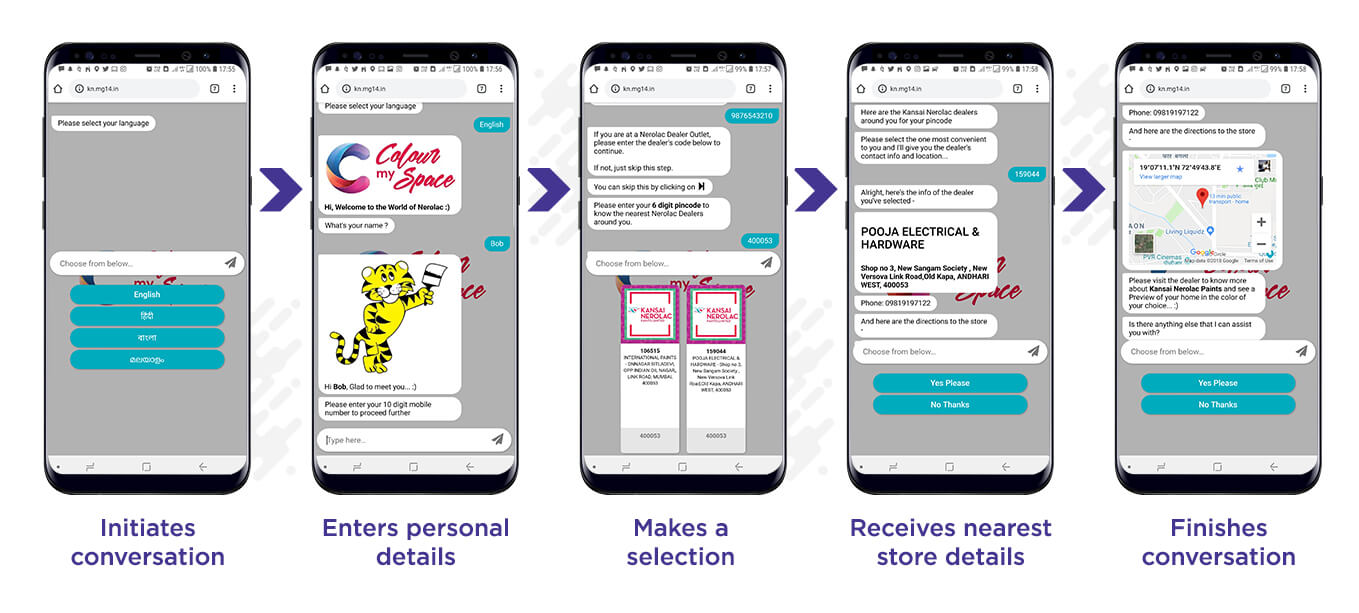
Karix provides Chatbot service to Nerolac for their customers to have an interactive experience.
1. User-initiated Request
In this form of conversation, the key is to identify what is the intent of the user, the moment you identify the intent, the Bot should start a conversation flow to achieve that intent. The bot should also be intelligent to identify the change in conversation topic gracefully like in a human interaction. This is the key to managing a User Initiated Request.
2. System-initiated Request
The conversation flow is mostly driven by who starts the conversation. It’s easier to start a conversation which is system initiated since system initiated requests have a specific goal in mind and would come to an end as soon as that is achieved. These flows are easier to implement, and enterprises see a faster ROI as against the user-initiated flow.
The key to effective chatbot use is to make sure they enhance your customer’s experience. Here are 5 steps to help you plan your chatbot implementation strategy:
- Start Small: The key to introducing chatbot for your business is to find out the smallest use case that has less complexities and yet leverages conversation-based interaction. This could be a product recommendation Bot, welcome Bot for your website, a feedback bot on an SMS Link, an information bot on an email link or even a lead capture form on all your lead management entry points. It’s best to pick a small use case so that your other work such as selecting a partner, outlining internal processes, understanding nuances etc become easier and go live is quicker.
- Define your Persona: Think of Siri and you immediately relate her with it. Whether you opt for a text-only chatbot or a voice-over based, one thing needs to be consistent, and that is your brand’s voice. The messaging has to be crisp and clear when implementing your chatbot. Uniformity is the key. So is your organisation’s branding as part of the bot, the look and feel, the GUI elements that position the brand values that your organisation intends to outline.
- Define your Content: It is important to have the behaviour and content of your platform defined so that you can outline your expectations with the vendor. You should also have an outline on what do you plan to automate and what value-add do you plan to achieve with each use case. This exercise you could do with a right partner.
- Planning a fall back: Knowing when the chatbot needs to take a backseat and human intervention is required, is an important aspect. Too much reliance and dependence on chatbot is not a great idea. So identifying situations where the chatbot redirects the messages to the customer service needs to be done.
- Picking your Partner: Pick a chatbot solution provider who has experience in the space of digital communication so that you have a one-stop solution. Companies such as Karix offer SMS, Voice, Email, Social, Push and much more as channels of communication and support initiating Chatbot based interaction from any of these channels.
In conclusion, Chatbot is evolving and revolutionizing the way brands speak to their consumers. There is no right or wrong in the way a solution is implemented what works for one may not work for the other. But with a well thought through plan and some consultation with the right partners Chatbots can really turn your business around.
